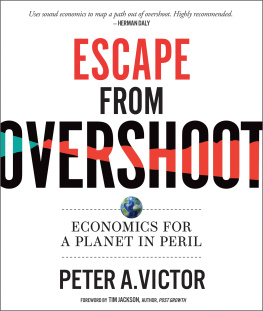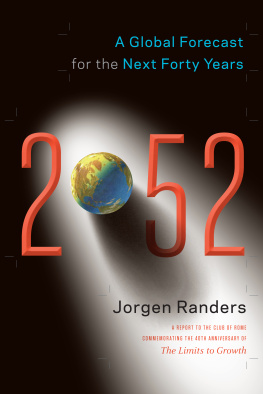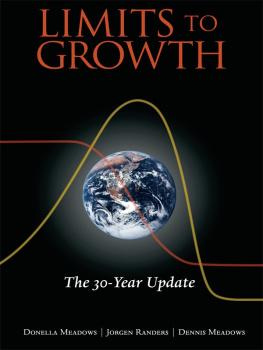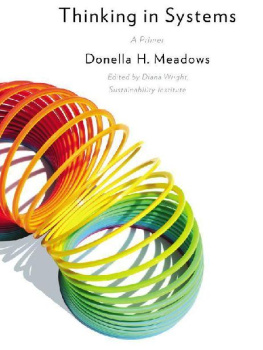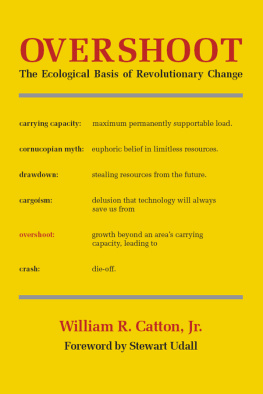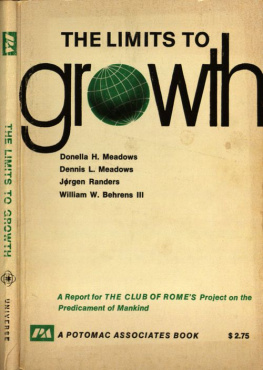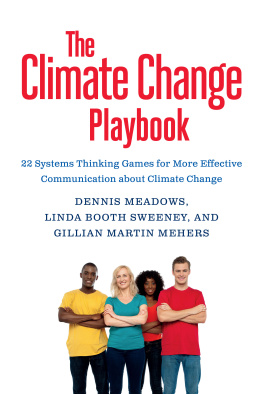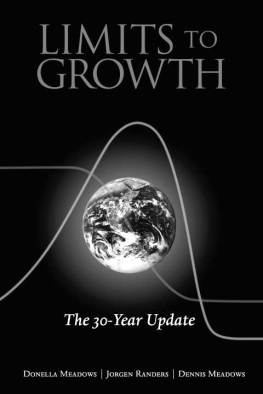
Advance Praise for Limits to Growth: The 3o-Year Update
"Thirty years have proven this model prophetic; now, in its newest iteration, we get one last challenge. May we pay more careful attention than in the past! We owe a great debt to the authors, including the late Donella Meadows, for whom this volume will serve as one of many fitting epitaphs."
-Bill McKibben, author, The End of Nature
"Reading the 30-year update reminds me of why the systems approach to thinking about our future is not only valuable, but indispensable. Thirty years ago, it was easy for the critics to dismiss the limits to growth. But in today's world, with its collapsing fisheries, shrinking forests, falling water tables, dying coral reefs, expanding deserts, eroding soils, rising temperatures, and disappearing species, it is not so easy to do so. We are all indebted to the Limits team for reminding us again that time is running out."
-Lester Brown, President, Earth Policy Institute
"Thirty years ago, The Limits to Growth was widely but erroneously attacked for prophesying doom, ignoring price, and denying adaptation. Today, with the global dynamics and challenges it foresaw now obvious to all, and the reforms it urged more vital than ever, its timely update remains an exceptionally valuable tool for understanding the unfolding future and creating the kind of future we want. Is there intelligent life on Earth? Work like this suggests grounds for cautious optimism."
-Amory B. Lovins, CEO, Rocky Mountain Institute
What the authors said in 1972:
"If the present growth trends in world population, industrialization, pollution, food production, and resource depletion continue unchanged, the limits to growth on this planet will be reached sometime within the next 100 years. The most probable result will be a rather sudden and uncontrolled decline in both population and industrial capacity."
How the critics responded:
"With current and near current technology, we can support 15 billion people in the world at twenty thousand dollars per capita for a millennium-and that seems to be a very conservative statement."
-Herman Kahn
"The material conditions of life will continue to get better for most people, in most countries, most of the time, indefinitely. Within a century or two, all nations and most of humanity will be at or above today's Western living standards."
-Julian Simon
The emerging consensus today:
"Human beings and the natural world are on a collision course. Human activities inflict harsh and often irreversible damage on the environment and on critical resources. If not checked, many of our current practices put at serious risk the future that we wish for human society and the plant and animal kingdoms, and may so alter the living world that it will be unable to sustain life in the manner that we know Fundamental changes are urgent if we are to avoid the collision our present course will bring about."
-"World Scientists' Warning to Humanity"
signed by more than i,6oo scientists, including 1o2 Nobel laureates, from 70 countries
LIMITS
To
GROWTH
LIMITS
TO
GROWTH
The 30-Year Update
DONELLA MEADOWS
JORGEN RANDERS
DENNIS MEADOWS



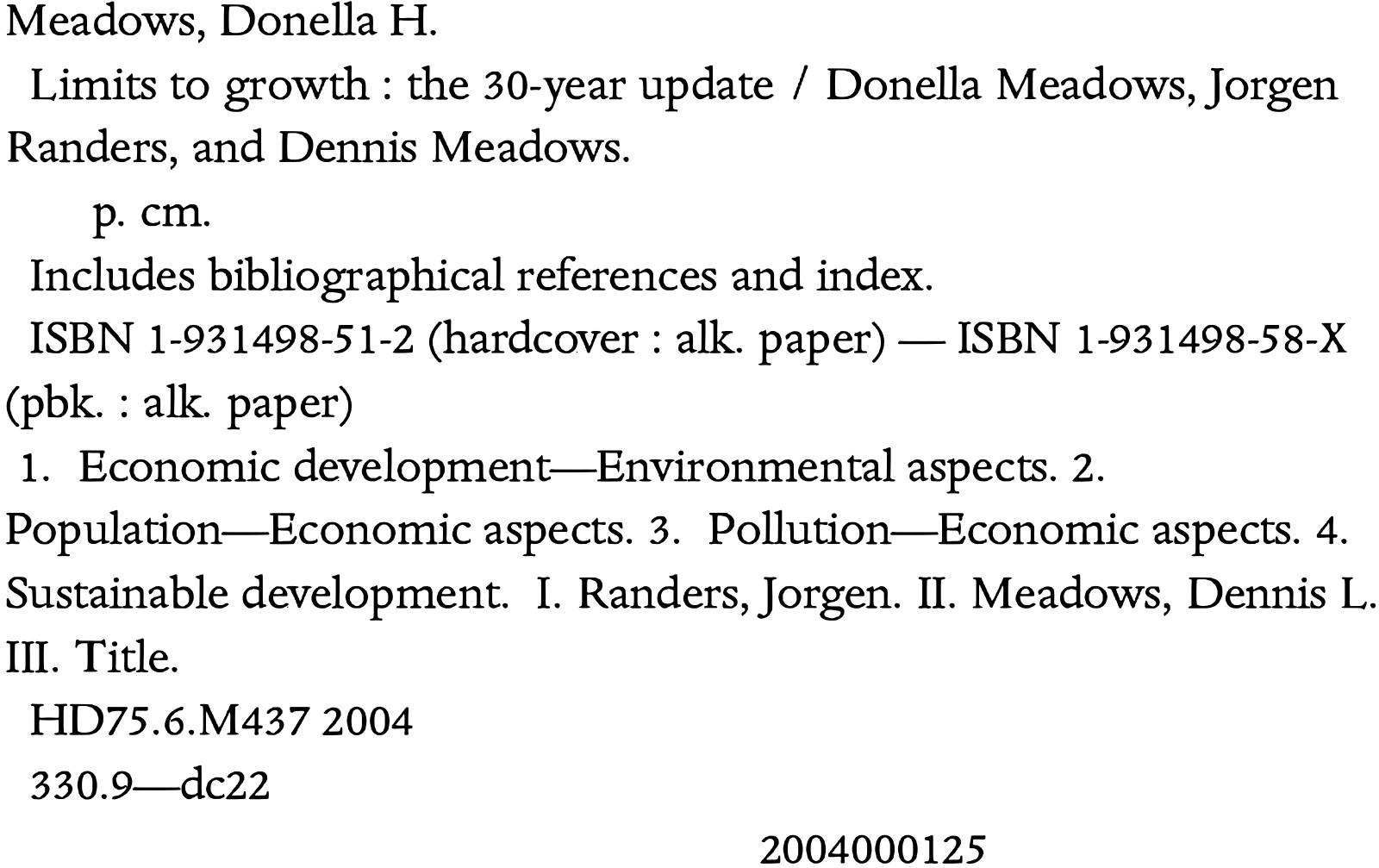

Dedication
Over the past three decades many people and organizations have helped us understand how limits to material growth will shape global futures. We dedicate this volume to three individuals whose contributions were fundamental:
AURELIO PECCET, founder of the Club of Rome, whose profound concern for the world and undying faith in humanity inspired us and many others to care about and address the prospects for humanity's long-term future.
JAY W. FORRESTER, professor emeritus of the Sloan School of Management at MIT and our teacher. He designed the prototype of the computer model we have used, and his profound systems insights have helped us understand the behaviors of economic and environmental systems.
Finally, it is our sad honor to dedicate this book to its main author, DONELLA H. MEADOWS. Widely known as Dana, by all those who respected her and appreciated her work, she was a world-class thinker, writer, and social innovator. Her high standards for communication, ethics, and service still inspire and challenge us-and thousands of others. Much of the analysis and prose here are hers, but this book was completed after Dana's death in February 2001. We intend that this edition will honor and advance her lifelong effort to inform the world's citizens and coax them toward sustainability.
Contents
ix
Appendices
Authors' Preface
Background
This book - Limits to Growth: The 30-Year Update - is the third edition in a series. The first text appeared in 1972.1 In 1992 we published the revised edition, Beyond the Limits (BTL),2 where we discussed global developments over the first 20 years in the scenarios of LTG. This 30-year update presents the essential parts of our original analysis and summarizes some of the relevant data and the insights we have acquired over the past three decades.
The project that produced LTG took place in the System Dynamics Group of the Sloan School of Management within the Massachusetts Institute of Technology (MIT) from 1970 to 1972. Our project team used system dynamics theory and computer modeling to analyze the long-term causes and consequences of growth in the world's population and material economy. We addressed questions such as: Are current policies leading to a sustainable future or to collapse? What can be done to create a human economy that provides sufficiently for all?
We had been commissioned to examine these questions by the Club of Rome, an informal, international group of distinguished businessmen, statesmen, and scientists. The Volkswagen Foundation in Germany provided the funding for our work.
Dennis Meadows, then on the faculty at MIT, assembled and directed the following project team, which spent two years conducting the original study.

A major foundation of our project was the "World3" computer model, which we constructed to help us integrate data and theories related to growth.3 With the model we can produce scenarios of world development that are internally consistent. In the first edition of LTG we published and analyzed 12 scenarios from World3 that showed different possible patterns of world development over the two centuries from 1900 to 2100. BTL presented 14 scenarios from a slightly updated version of World3.
LTG became a best seller in several countries, eventually being translated into about 30 languages. BTL appeared in many languages and is widely used as a university text.
1972: The Limits to Growth
Next page

